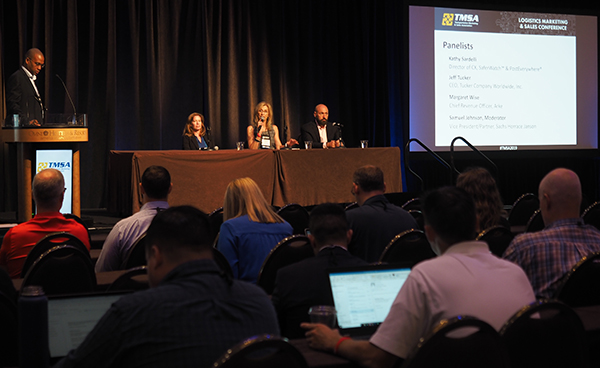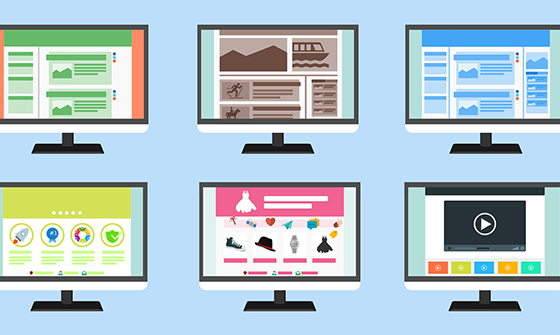
Written By: TMSA Staff | Jun 19, 2019 12:00:00 AM
TMSA’s keynote, Robert Rose of The Content Advisory, discussed how transportation and logistics companies are creating customer experiences that drive awareness, generate new leads, and enable sales in entirely innovative ways.
So what do my customers want? The savviest executives in the transportation and logistics industry are now asking this question, as evidenced at the annual TMSA Logistics Marketing & Sales Conference last week at the Omni Amelia Island Plantation Resort near Jacksonville, Florida.
“Companies in this space understand that they are in
the customer experience business, and they understand that how an organization delivers for customers is beginning to be as important as what it delivers,” said keynote Robert Rose, Chief Troublemaker of The Content Advisory, a strategy, advisory and education group for The Content Marketing Institute.
Where to Start? Objectives of a CX Strategy
TMSA brought to this year’s conference a shipper who has successfully implemented CX strategy. Dave Gardner was Vice President of North America Supply Chain & Customer Experience for Ingredion Inc. for five years. Currently he’s Executive Vice President of Operations for Amy’s Kitchen, where’s he’s responsible for manufacturing, sourcing, planning, transportation and distribution activities.
“CX is putting the customer first,” said Gardner, “and that means all employees need to own the customer experience.” But he made a critical observation: Do employees work for the customer. Unfortunately larger companies in particular are siloed and set internally-biased objectives that may not be focused on the customer.
Gardner suggested to establish objectives of a CX strategy that redesign business processes so they’re fully meeting customer needs and create a culture in which employees put themselves in the shoes of the customers. This requires a focus on six disciplines: Strategy, Voice of Customer (VoC), Metrics, Processes, Rewards, and Governance.
Dave Gardner says that a positive CX culture leads to greater retention, improved margins, and additional sales.
Building a Successful CX Framework
There are three components to developing and executing your strategic CX approach, according to Samuel Johnson, Vice President and Partner of Sachs Horace Janson,
Ultimately a firm in transportation and logistics needs to ensure that all of its internal stakeholders are paying close attention to detail on service delivery and the overall customer experience with its customers and prospects.
Building intelligent and actionable insights through multi-channel VoC can be done through four primary multi-channel VoC opportunities, said Johnson. They include: strategic advisory boards (active boards with the intent to deepen relationships and create best-fit solutions), online panels (an online customer community to obtain trends and perspectives that shape your solutions), lifecycle surveys (book of business surveyed at key points and after transactions, and predictive analytics (models that analyze customers over time and identify potential churn and lifetime value).
Johnson also says employee education, training, and engagement at all levels is critical for success.
Understand the Customer’s Interaction Through Their Eyes
“It’s important to map out and understand the customer’s journey.” This was the consensus of a CX panel of industry leaders, including Kathy Sardelli, Director of Customer Experience, SaferWatch™ and PostEverywhere®; Jeff Tucker, CEO, Tucker Company Worldwide, Inc.; and Margaret Wise, Chief Revenue Officer, Arke. They explored what CX means to their company and what it means for a transportation and logistics company to be more customer-centric.
“It’s critical that companies pay attention to the complete end-to-end experience customers have with a company - from their perspective,” said Sardelli. Too many transportation and logistics companies focus on individual interaction touchpoints devoted to billing, onboarding, service calls, and other tactical activities. In contrast, a customer journey spans a progression of touchpoints and has a clearly defined beginning and end.
Even if employees execute effectively on individual touchpoint interactions, the overall experience can still disappoint. And typically, customer journeys are more directly tied to business outcomes than are touchpoints.
“Quantify what matters most to your customers,” advised Tucker to the audience. The panelists discussed that customers hold companies to high standards for service performance and price in this industry. How can companies determine which of these factors are the most critical to the customer segments they serve? Which generate the highest economic value and impact? With most transportation and logistics companies, there are a handful of critical customer journeys that can be identified and defined. It’s then important to understand them in order for your company to maintain focus, have a positive impact on customer satisfaction, and begin the process of redesigning functions around customer wants and needs. Analytical tools and big data sources from marketing and sales to operations and finance can help companies parse the factors driving what customers say matters to them.
Business Outcomes Resulting from a Strong CX Strategy
Gardner suggested that there can be significant ROI from a good CX strategy. “There can be improved financial performance in top line, margin and growth, and improved productivity and cost reduction,” he said. He also cited research by Forrester that CX leaders grow revenue faster than CX laggards, and suggested there could be as much as 7x growth in revenue over five years. If transportation and logistics companies embrace CX, opportunities will abound.
Tags: Strategy

Note: Drew Bailey, a TMSA member, is a finalist for 2017 Content Marketer of the Year (and the winner is announced at Content Marketing World this September). This content was developed in part by...

By Robert Rose, Chief Strategy Officer of The Content Advisory, the Consulting & Education Group of Content Marketing Institute. For more than 20 years, Rose has been helping marketers to tell their...

By Robert Rose, Chief Strategy Officer of The Content Advisory, the Consulting & Education Group of Content Marketing Institute. For more than 20 years, Rose has been helping marketers to tell their...